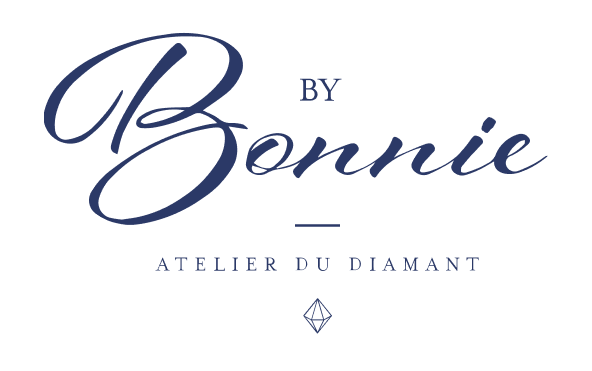
GIA bringing down lab diamonds? New grading system explained!
Share
What if I told you that a colorless E VS1 lab diamond and a near-colorless J VS2 lab diamond will now be graded the same by GIA? Sounds insane, right? Well, starting October 1st, 2025, that’s exactly what’s happening.
Let’s unpack what GIA just announced, why it’s shaking the entire diamond world, and what this means if you own—or are planning to buy—a lab-grown diamond.
GIA’s New Grading System
On August 26, 2025, GIA shared its new lab diamond grading system.
Here’s the shocker: the familiar scale we all know—DEF as colorless, GHIJ as near colorless, VS and VVS clarities, SI, etc.—is gone for lab diamonds.

What if I told you that a colorless E VS1 lab diamond and a near-colorless J VS2 lab diamond will now be graded the same by GIA? Sounds insane, right? Well, starting October 1st, 2025, that’s exactly what’s happening.
Let’s unpack what GIA just announced, why it’s shaking the entire diamond world, and what this means if you own—or are planning to buy—a lab-grown diamond.
GIA’s New Grading System
On August 26, 2025, GIA shared its new lab diamond grading system.
Here’s the shocker: the familiar scale we all know—DEF as colorless, GHIJ as near colorless, VS and VVS clarities, SI, etc.—is gone for lab diamonds.

That means your colorless, high-quality diamond might now share the same grade as a J VS2.
Why People Are Outraged
To put it simply: this feels like a downgrade.
Consumers trusted GIA because of its precision and reputation. Buying a GIA-graded lab diamond meant confidence—knowing exactly what you were getting. Now, instead of saying, “This is a GIA E VS1,” jewelers will be forced to say, “This is a GIA Standard diamond.”
Generic. Flat. Stripped of detail.
The industry backlash is loud. Many feel this move is GIA protecting the natural diamond industry by diminishing the appeal of lab grading.
GIA’s Justification
Here’s GIA’s official reasoning:
-
Most lab-grown diamonds fall into a very narrow quality band.
-
Simplification reduces grading costs.
-
It “aligns” better with market value.
Translation? Lab diamond prices have already dropped 70–80% since they first became popular. GIA is arguing it no longer makes sense to apply the same detailed grading rules.
But the question remains: does this simplification really benefit the consumer—or is it shielding the natural diamond market?
Why This Feels Familiar (Remember EGL?)
We’ve seen this movie before.
Years ago, EGL was notorious for over-grading diamonds. It led to lawsuits, mistrust, and eventually EGL collapsing. IGI then became the dominant grading body for lab diamonds—but IGI is also known to be looser in grading, depending on the stone.

GIA’s reputation was always about trust. It was the gold standard for natural diamonds. With this new move, GIA risks throwing that away in the lab diamond category.
What This Means If You Own a Lab Diamond
If you already have a GIA lab diamond report, you might feel like your diamond has suddenly been “downgraded.”
If you’re looking to resell or trade in, the perception of “Standard” versus “Premium” could impact value.

And for jewelers like myself, curating stones just got much harder. Instead of relying on precise grades, we’ll have to scrutinize and dig deeper to separate the best from the average.
My Predictions for the Future of Lab Diamonds
-
Prices Will Drop Even More
If color and clarity distinctions disappear, lab diamonds will be sold more like moissanite or cubic zirconia—by carat weight alone.
-
IGI & GCAL Will Rise
Consumers will pivot toward labs that still provide detail. IGI is widely used, and GCAL—an incredible lab based in New York that I’ve toured—will gain traction as the premium alternative.
-
Consumer Confusion Will Grow
People want detail. Stripping it away will only frustrate buyers and complicate the process further.
-
Natural Diamond Prestige Will Climb
Look around—XXL celebrity engagement rings are trending again. Lauren Sanchez’s 30ct oval. Taylor Swift’s 8ct old mine cut. Ronaldo’s Georgina with her oval diamond.

Many buyers now prefer the individuality of natural inclusions over flawless, mass-produced lab stones.
5. Lab Diamonds Will Still Thrive
They’ll remain popular for decades in both engagement and fashion jewelry. More choice is always good for consumers—but the market will segment even further.
6. Craftsmanship Will Matter More Than Ever
When grading no longer tells the full story, design and artistry will.

Clients will seek out thoughtful craftsmanship, unique settings, and meaningful jewelry that reflects their story—not just a carat weight. Vintage-inspired pieces will continue to grow in demand.
Bonnie’s Final Thoughts!
This shift by GIA changes the entire landscape of lab diamonds. For some, it means opportunity. For others, it feels like a loss of trust.
As for me? I’ll keep focusing on what I’ve always believed in: quality craftsmanship, thoughtful design, and education. Diamonds may be graded differently, but the story and meaning behind your piece—that’s timeless.

So tell me: what do you think? Is GIA protecting the natural diamond industry, or are they simply adjusting to market reality?

